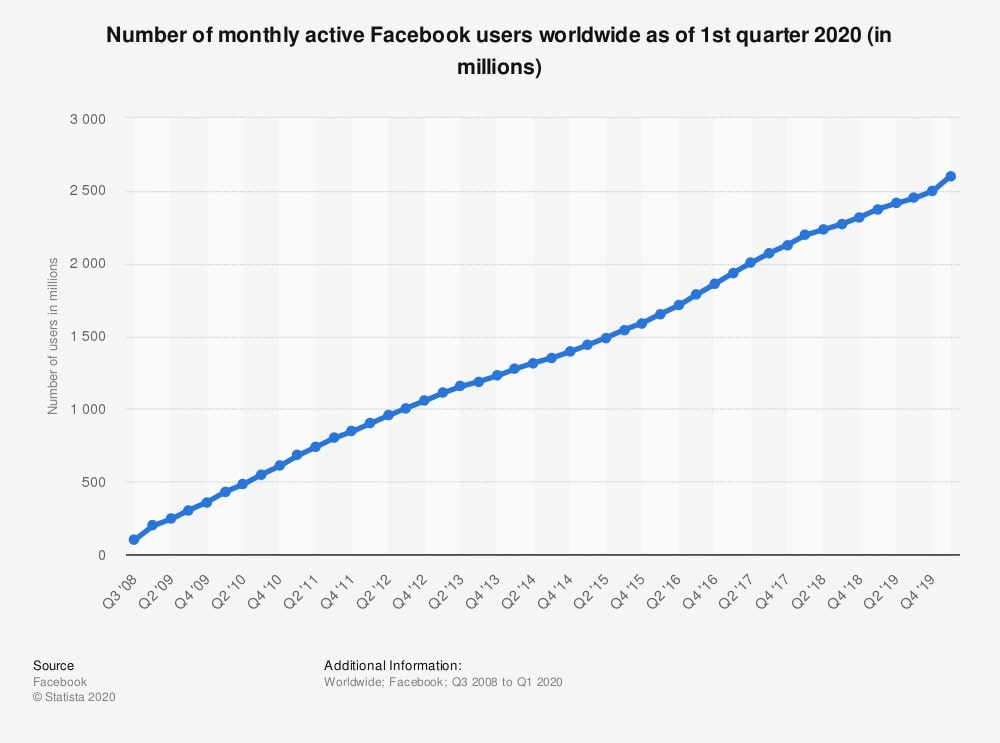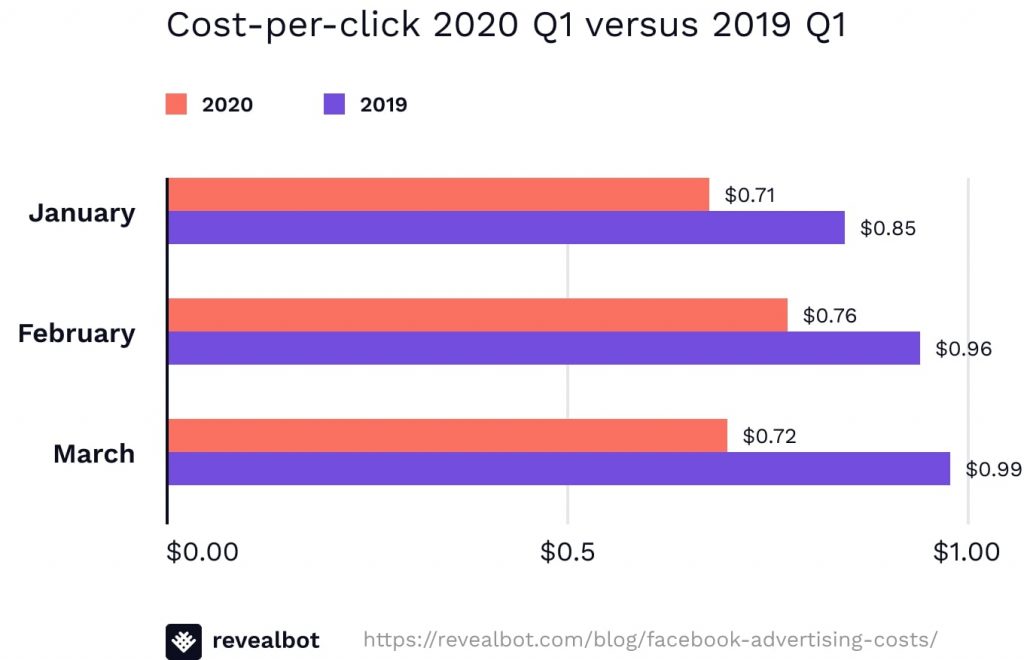That sheer size and scope of Facebook should mean a lot for your marketing strategy.
Over two billion users are already used to watching videos on the platform to interact with friends, consume entertainment content, and even get their news. More importantly, though, in recent years, people have been increasingly using the platform to engage with brands and discover new products as well.

The good news is that Facebook has some of the best tools available out there for marketers. But as the best video companies will be quick to tell you, succeeding with Facebook ads requires hard thinking about the videos you produce, the users you’re interested in reaching, and the needs of your campaign.

So, to help you navigate the platform and its tools to great results, we’ll walk you through some of the essentials you need to keep in mind when planning your video marketing presence on Facebook.
Table of Contents:
- Facebook Ads by the Numbers
- Choosing the Right Audience
- Best Video Style for Each Stage of the Funnel
- Advanced Strategies: Retargeting
- Bonus: Tips from the Pros
- Conclusion
Facebook Ads by the Numbers
Why explore Facebook as a marketing venue? It’s a fair question is you aren’t privy to some stats.
Many reasons justify the time and work investment that it takes to produce video ads for Facebook. But before we go through every relevant aspect, let’s consider some recent hard data points.
Cost-Per-Click (CPC) Is Decreasing in 2020
Compared to last year, Facebook advertising costs are declining significantly and continue to do so rapidly. A recent 2020 study reports that in January, February, and March, CPC fell 16%, 21%, and 27% respectively in relation to the same period last year.

Facebook Ad Impressions are increasing exponentially
Facebook video ads are reaching more people than ever. By Q3 of 2019, general ad impressions increased by 37%. That means that you can essentially reach more people by spending the same sum of money or even less.
By the way, if you’ve ever wanted to save these video ads, check out our Facebook Video Downloader.
Most Facebook Ad Revenue Comes from Mobile
A recent report by Facebook reveals that 94% of ad revenue in the platform comes from mobile users. That indicates that people are using more smartphones than desktops to interact with brands.
By these three telling measures, then, Facebook seems to be a fertile spot for marketers to make a powerful brand presence. But what is the first thing you need to start thinking about?
Choosing the Right Audience
The main aspect that will determine the impact of your video ads on Facebook is whether you’re zeroing in on the right targets. The information you have about the general buyer persona you’re trying to reach is essential to determine how to customize your content.
Lucky for you, the platform is well-equipped with tools that let you delimit the audience to which you want to position your videos. One of these is the setup variables, which include:
- Location — particularly useful to reach people within a specific geographical area that, say, you can ship to.
- Demographics — by specifying on your audience’s gender, age, relationship status, educational level, and so on, you can further refine the outreach of your ads.
- Interests — you can enter new markets by following people’s hobbies, activities, and pages they like.
- Behavior — it’s good to know how they’re interacting with your content and what their purchase and device behavior are.
The best strategy you can take is to use these variables in conjunction. Start by selecting the basic location and demographics options that apply to your audience. Then establish the more specific targeting filters that relate to your brand’s trade.

Best Video Style for Each Stage of the Funnel
Identifying your target audience is the first crucial step to successfully getting your message across on social media. The problem now is what type of video you should be showing them.
In practice, not all videos will work the same way for all viewers. Audiences have different needs depending on their degree of familiarity with your brand. The prospects that already know your product and have compared it to other options will respond differently to certain videos than those who are just discovering your brand.
There are no universal formulas here. But a proper approach to Facebook video marketing involves thinking of your audience in terms of their general buyer persona in their stage of the sales funnel.
Top of Funnel: Achieving Brand Visibility
The first stage in the marketing funnel is where you need to raise brand awareness. At first, your targets don’t know anything about your brand; what’s more, they are not thinking in terms of a specific solution yet. Rather, people face certain problems, and they are beginning to search for ways to solve them.
You can help your audience get clarity about their problems with educational explainer videos. These videos are not intended to be self-promotional—which is perfect since your prospects are barely considering buying a product. Instead, they focus on the problem at hand and provide useful knowledge about it.
When you present your solution at this stage, do so tangentially, as audiences are more concerned about understanding the problem as such.
Middle of Funnel: Introducing Your Solution
Once your audience already has a grasp of the problem at stake, they take an active interest in researching and comparing options in the market. It’s your time to get your value proposition known—and perhaps no other type of video does it better than product demos.
These videos showcase your product in action to give prospects a clearer idea of what unique solution your brand offers them. This is why it’s very important not just to show nice shots of your product. Instead, you want to emphasize its distinctive features and illustrate how people can use it in their lives.
Bottom of Funnel: Earning Trust
Discovering a great product doesn’t necessarily translate into a purchase. Prospects still have questions in their minds that hold them back from making a confident buying decision.
This is the point where you need videos for building a strong brand image. Testimonial videos give audiences the chance to see how other people have benefited from your product. Similarly, ‘About Us’ videos inform audiences about the values that drive your work and make your brand a competent, reliable option.
Advanced Strategies: Retargeting Audiences Who Already Viewed Your Video
Most of the time, it’ll take more than one ad to get your audience to the finish line. To be able to close the sale, you need to reach back to the people who have already engaged with your content.
One of the best resources available on Facebook ads is the option to retarget those audiences. Once they’ve watched your video, the platform records information about how they’ve interacted with your content. With these useful analytical cues, you can create custom audiences to whom you will direct your future ads.
There are many categories you can choose from to specify your custom audience:
- You can create a list of people by the time they spent watching your videos.
- You can target those that have interacted with your Facebook page.
- Track those users who opened or completed your forms, or who took an interest in your events.
By creating audience lists to deliver your new ads, you will be able to focus your efforts on providing them more targeted videos aimed for conversions.
Bonus: Tips from the Pros
We have gone a long way talking about how to target Facebook users, what types of videos are best for addressing their needs, and the tools available on the platform to ‘get back’ to your viewers.
But how does a good Facebook video ad look like? What specific elements should you pay attention to when producing your video?
Let’s take this last section to review some of the essentials of an awesome video ad.
Plan for Sound Off Views
When Facebook users navigate through their newsfeed, all the videos they encounter begin to play automatically on mute. So, you need to deliver your message without overly relying on audio.
For starters, make use of your artistic techniques to convey your story visually. If you’re selling, say, running shoes, don’t just give a testimonial of their pros and cons. Instead, have people wear those shoes in real-time and put them to the test.
Also, it’s always a good idea to add overlaying text when you ad needs it. Although viewers will probably still watch your video without sound, by using transcripts, you’ll make sure they will get the gist of your message.
Catch Viewers’ Attention Early On
As a general rule, ads on social media tend to be short, about 30 to 60 seconds. The reason is that users have many distractions to attend to focus on just one video.
Your ad needs to stand out from the very beginning. Crafting a compelling hook is just as important as the quality of the animation or sound mixing. To effectively introduce your value proposition to your audience, you need a provocative story or issue to keep them engaged.
So, for example, instead of telling prospects the special features of the products you sell, startle them with a curious piece of data they haven’t thought about. Or create your own narrative and have relatable characters go through funny situations until they find your solution.

Keep Your Title and Copy to the Point
Effective storytelling isn’t the only means of enticing your audience. Sometimes, the difference between successful and not-so-successful ads lies in the written titles and descriptions.
The secret to great titles and copies is to make them persuasive enough. Catchy titles that pose an interesting question attract more viewers. For example, instead of naming their ad ‘The best chocolate bar in the world,’ Snickers opted for a fun question: ‘Who are you when you’re hungry?’
When it comes to copies, be sure not to overload your viewers with long text. An average of fifteen words (which can be read in a single glance) is all it takes to give users useful information. Plus, don’t forget to add the relevant hashtags and links!
Design for Mobile Consumption
As we saw at the start of this article, only a small portion of Facebook users consume ads via desktops. For most purposes, your video ads should be designed to specifically target audiences with smartphones. What does that mean in real practice?
You should optimize your videos for mobile viewers. In contrast to the traditional landscape view, Facebook videos adapt better to the square aspect ratios from 9:16 to 16:9. That’s your guarantee that viewers will have a great experience and that quality won’t be a problem.
Include Clear CTAs
Your ad is not completed until you’ve given your audience clear indications of the places where they can learn more about your product and what steps they can take.
Introduce both in your video and in the copy clear, unambiguous CTAs to indicate prospects the way forward. Popular CTAs can range from anything like ‘Subscribe to Our YouTube Channel‘ and ‘Get Started’ to more ambitious cues such as ‘Get Premium’ that will take them to your landing page.
Conclusion
Making Facebook video ads a core component of your marketing strategy is a good asset you cannot afford to miss out on.
The platform has available all the tools you need to spread your message effectively. Its targeting options allow you to reach the right audience at the time. And once they engaged with your content, you can set up custom audiences to give them content that best meets their needs and wants.
Many marketers have already made their move to (and succeeded with!) Facebook video ads. What will be your story?






